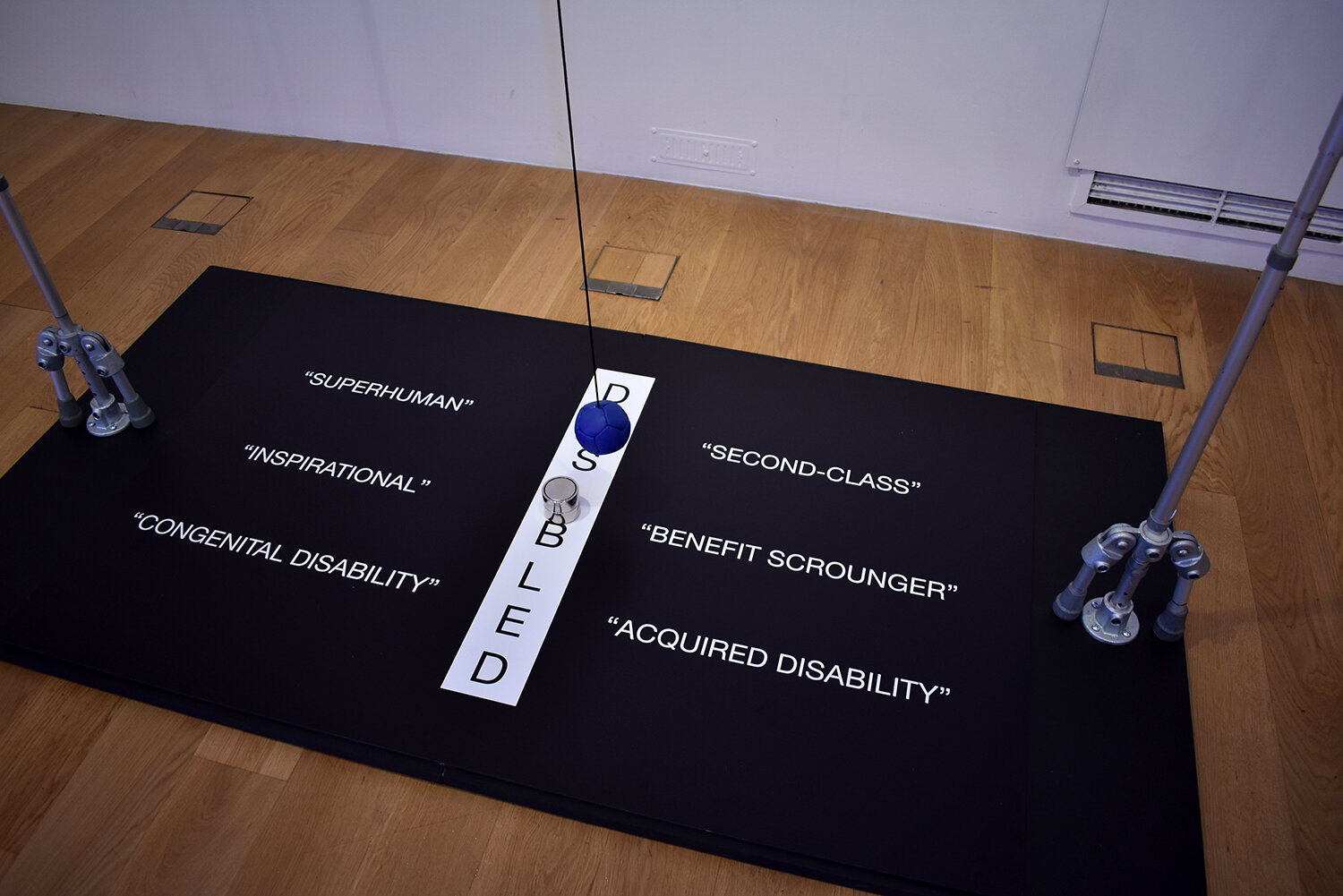Akathisia (2019)
Commissioned by Paralympics PASCCAL AHRC and Bournemouth University
Exhibited at Asia House, London in July 2019 as a part of the BodyParts Exhibition
‘Re-presenting para sport bodies: Disability and the cultural legacy of the Paralympics’ a report by PASCCAL (funded by the Arts and Humanities Research Council (AHRC), looked at the London 2012 and Rio 2016 Games in order to understand audience interpretations of disabled bodies, how they were represented through the media and how media coverage of para-sport shapes public attitudes or influences the everyday lives of disabled people.
As an artist, I was asked to translate and provide my interpretation of the research and transcripts (over 1,000 hours of data) into an art work that reflected the overall consensus of the report.
Akathisia (2019)
Akathisia (pronounced: AKAH-THIZ-EE-AH) is an interactive sculpture visually addressing the polarization and disability politics relating to the marginalization and oppression of the disabled community. Through an assemblage of mobility aids and equipment (including para-sports equipment), mixed-media and scientific enquiries, Akathisia is an appropriation of the concept and design of a pendulum device situated within a gallows frame.
Just like the swing of a pendulum, societal attitudes of disability can swing from one extreme to the other.


The artistic enquiry centres around current socio-political concerns in the UK and the constant shifts in beliefs, opinions and attitudes of disability against the findings and quotes from PASCCAL’s research and interview transcripts (with both disabled and non-disabled audiences) that concern the publics interpretation of para-sports. The foundation of Akathisia is influenced by the artist’s lived experience as a disabled, neurodiverse, woman of colour with a history of living in social disadvantage and poverty. Through personal experience, public disability statistics and the interview transcripts, disability ‘hierarchies’ became evident – some include ‘super-humans’ vs ‘second-class citizens’, Invictus Games vs Paralympics, disabled vs non-disabled, ‘inspirational’ vs ‘benefit scroungers’ and staring vs intentional avoidance.
The clinical word Akathisia relates to a restless movement disorder of the body, however, here it’s applied it to the restless and ever-changing shifts in societal personal-political ideologies of disabled people. The gallows frame is constructed using crutches, grab rail fixtures, sculpted-plastic and ferrules. The sculpted-plastic appears skeletal - almost orthotic and prosthetic-like; breathing life into a sterile dichotomous construct. The pendulum device utilises the mass of a boccia ball as the pendulum’s ‘bob’ on a string. Through interaction, the boccia ball will swing. The use of the boccia ball directs us to the lack of awareness and visibility of disability sports as well as other sporting competitions for varying disabilities (e.g. Special Olympics).
The interactive element invites visitors to co-perform a task, giving up a measure of artistic control over the work to the spectator-turned-participant, therefore aiding in a two-way exchange with the artist - and with conceptual intent - perhaps even uttering a complicit responsibility between the spectator and their social attitude towards disability. All elements in Akathisia– the objects, materials and structure - have significance concerning the negative disability tropes and attitudes in contemporary society; from the boccia ball to the gallows.
Learn more about the project and the BodyParts exhibit by PASCCAL, here.
Video footage as an exhibition visitor (Credit: Richy K Chandler),
X-rays (under the data protection act), images and works. All Rights Reserved ©️ 2021 Aminder Virdee.
